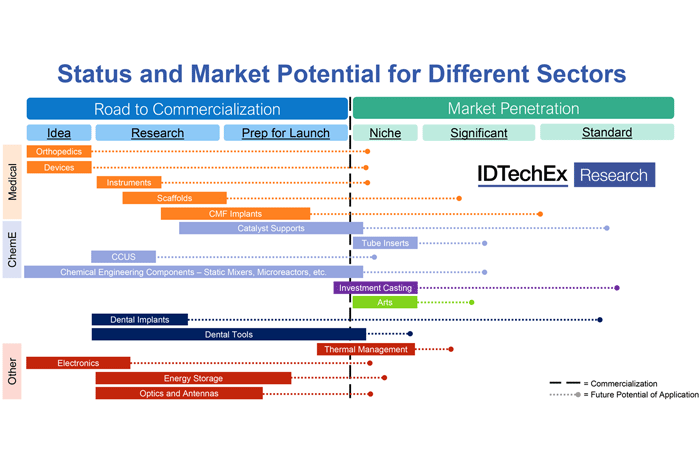Seven-fold growth in ceramic 3D printing market by 2032
Ceramic 3D printing is an emerging segment within the 3D printing industry that began its commercial journey in the past 10 years, making it a relative newcomer compared with polymer and metal 3D printing. However, increasing entrants into the field in the past few years, from major ceramics companies to small 3D printing startups, illustrates that interest in ceramic additive manufacturing is picking up.
In their new report '3D Printing Ceramics 2022-2032: Technology and Market Outlook', IDTechEx forecasts the ceramic 3D printing industry to grow seven-fold to $400m by 2032. Given how young the market is, seven-fold growth in the next ten years indicates a positive future for the industry.
The rationale behind ceramic 3D printing
Why would ceramics manufacturers turn to 3D printing for ceramic shaping? As it turns out, the reasons driving polymer part manufacturers to turn to polymer 3D printing are very similar. Ceramic shaping techniques, such as hot isostatic pressing, extrusion, and injection molding, are long established in the ceramics industry; however, the high initial costs to make these tools and the long lead time involved make these very difficult and expensive to use for prototyping and small/medium-volume part production. Ceramic 3D printing, much like polymer 3D printing, fills this niche perfectly by substantially decreasing the initial costs of production.

Who is jumping into ceramic additive manufacturing?
Despite being a fledgling technology in comparison to its counterparts in polymer, metal, and composite 3D printing, the ceramics 3D printing market has very notable 3D printing and ceramics industry players trying to gain market share for themselves.
From the additive manufacturing market, this includes metal 3D printing companies like voxeljet and ExOne, who have made their machines compatible with ceramics, and HP, who have filed for patents involving ceramics for their Multi-Jet Fusion technology.
From the ceramics industry, ceramic materials suppliers like SGL Carbon and Schunk Carbon Technology are offering 3D printed high-performance ceramic part production, while others like Morgan Advanced Materials and Johnson-Matthey are actively conducting research and development to see how ceramic additive manufacturing can optimise their products. Lastly, several companies dedicated to ceramic 3D printing, like Lithoz and 3D Ceram, are key leaders within the market, having developed their own proprietary ceramic printing technologies. These companies’ interest in ceramic 3D printing indicates that the path for future growth for the market is open.










